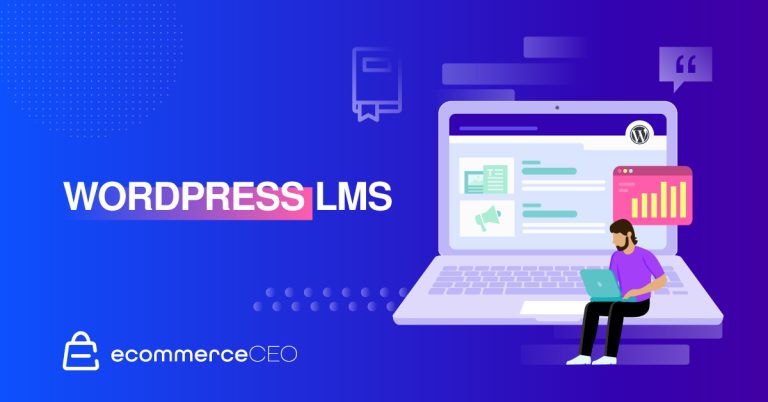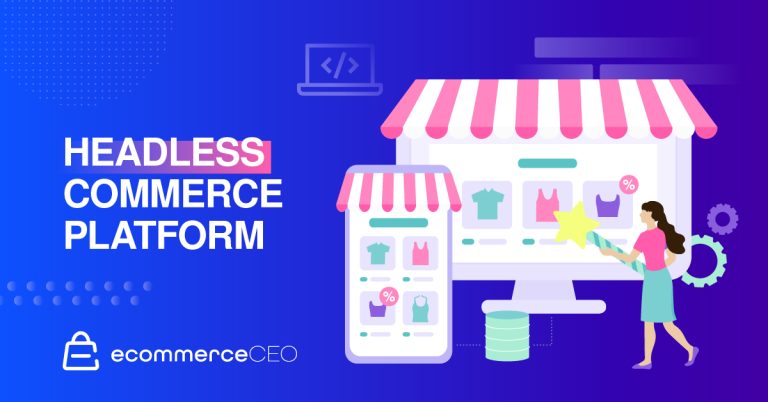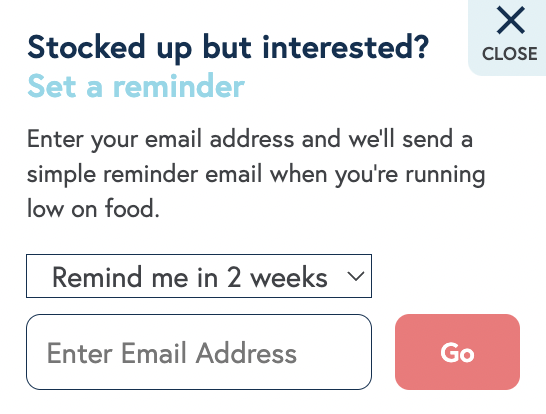So, which is better for online retailers — Google, Meta, or TikTok ads? The short answer is: All of the above. But there is a catch.
When it comes to Google Ads vs. Facebook Ads vs.TikTok Ads, the choice of when to use which campaign in terms of target shopper, campaign objective, or product is imperative to the success of each. However, there are four key factors worth reviewing when optimizing your eCommerce ads strategy:
Let’s take a closer look at how Google, Facebook, and TikTok ads compare in each.

User Demographics
Which platform is the most popular — Google, Facebook, or TikTok? According to Pew Research, Google’s YouTube is still the most popular social media platform for US users, followed second by Facebook and then Instagram.
However, these statistics are bound to change when you consider each platform’s user demographics. If you’re targeting 18-year-old college students, for example, you may find TikTok more popular than Facebook or Google.
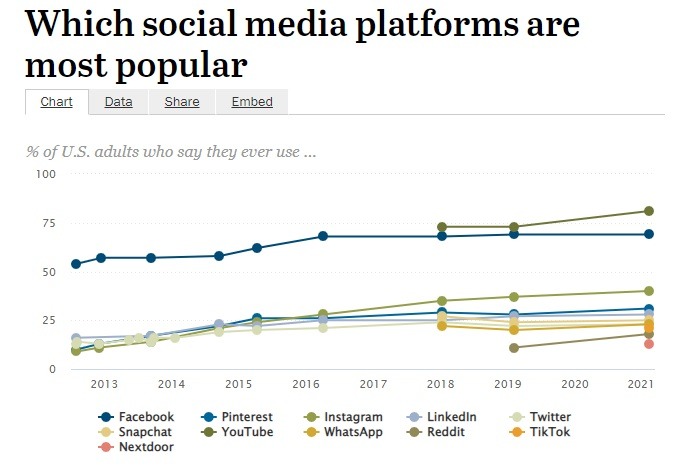
Google Ads User Demographics 2022
As a whole, Google has 4.3 billion users worldwide, which we can admit offers an extensive reach across most market segments. However, to drill down more distinctive Google Ads user demographics that each platform offers depends on an advertiser’s specific ad targeting.
Why? Because Google’s user base is incredibly vast, crossing segments.
- YouTube user demographics. YouTube accounts for 6% of Google’s ad revenue. It is the second most used search engine outside Google Search, and the second most popular social platform. In the US alone, YouTube has 247 million users, half of whom (53.9%) are male. The majority of their users are between the ages of 15–35.
- Search demographics. When it comes to search, there is no doubt that Google has dominance. According to Statista, 75%+ of all desktop search originates on Google in the US. This, of course, means that Google searchers fall into several different segments.
- Display user demographics. Unlike Search Ads, Display allows advertisers to target audiences beyond keywords to include topic/interest-based targeting to link ads to their partner content. This includes over 200 million sites, apps, and videos that cover various interests and are spread across multiple segments.
The bottom line is that Google Ad platforms speak to a variety of audiences, giving advertisers a lot of opportunities. But, of course, it all depends on how campaign targeting is managed and how it fits in with other digital marketing channels in your shopping journey. But more on that later.
Facebook Ads User Demographics 2022
Every day, 2.82 billion people log into Meta’s apps, including Facebook, Instagram, WhatsApp, and Messenger. At the same time, the largest demographic group of Facebook users is between the ages of 25 and 35. Still, it offers the advertising potential to reach 26.7% of the total global population.
Let’s look at some Facebook demographic and advertising audience stats from Hootsuite’s latest digital trends report:
- 70% of US adults use Facebook
- 2.11 billion users can be reached with Facebook Ads
- 43.4% of potential audiences report as female, while 56.6% report being male
- The most significant share of Facebook advertising reach are men aged 25–34
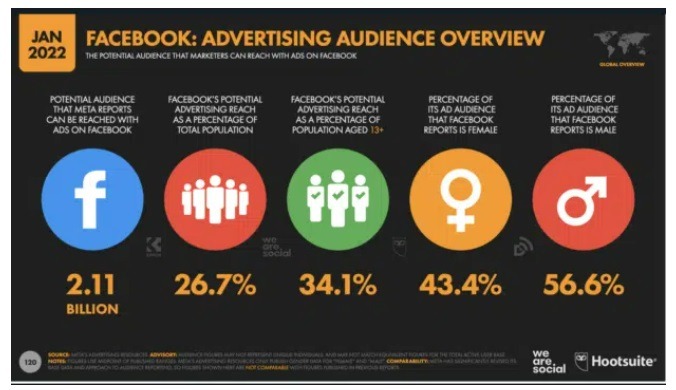
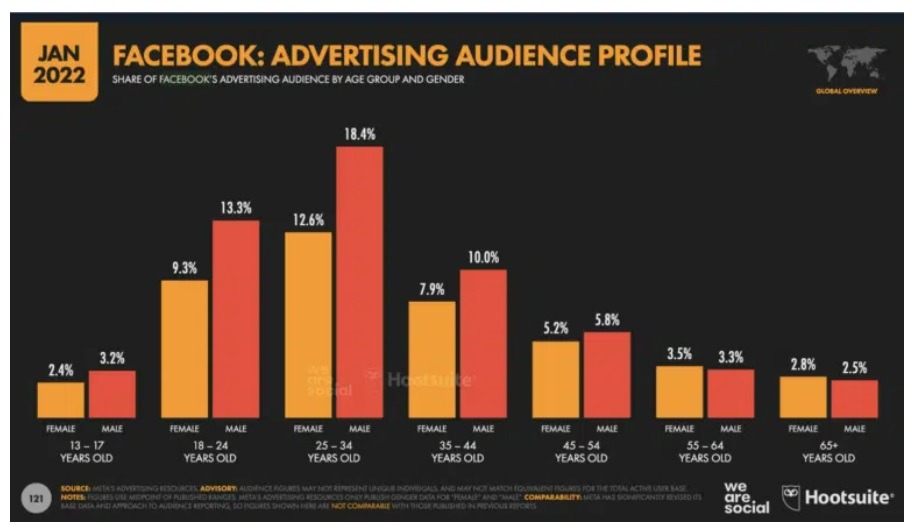
[Source: Hootsuite]
Tiktok Ads User Demographics 2022
With over a billion users, TikTok has been able to secure over 142.2 million North American users in just under five years. Additionally, it is fast becoming a popular digital marketing tool for eCommerce stores, with TikTok ad examples generating millions of views.
However, TikTok still seems to be popular with younger demographics. Statista’s April 2022 report shows that the largest segment of TikTok global users, at 24%, are women between 18 and 24 years old.
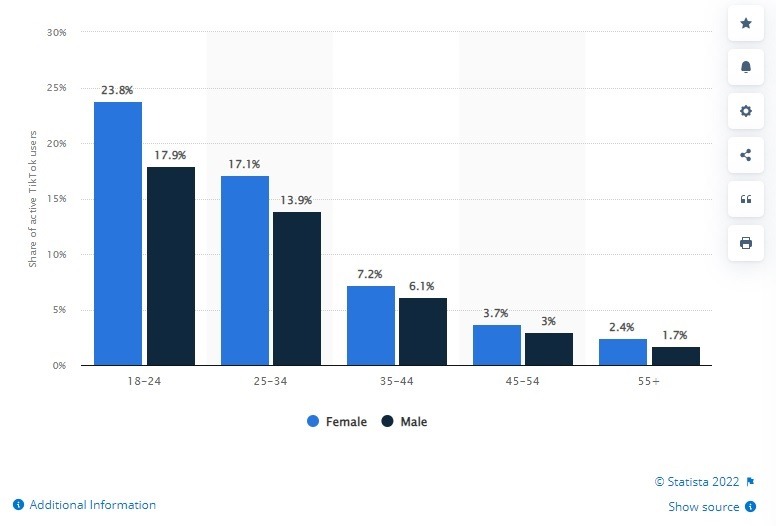
When it comes to TikTok ads, Datareportal reports a potential reach of 970 million, 19.4% of total internet users 18+.
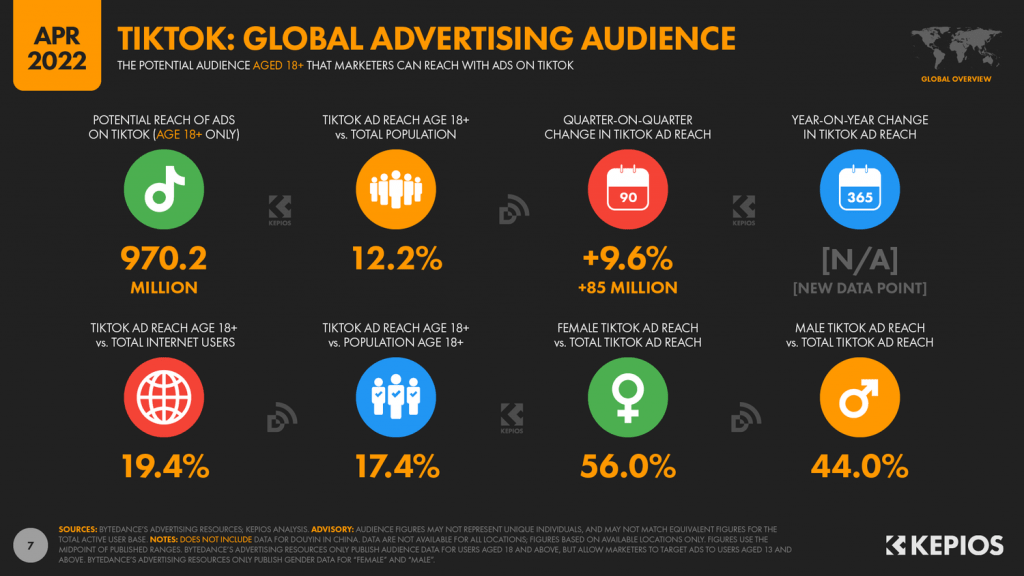
Google vs. Facebook vs. TikTok Ad Demographics
The bottom line is that when comparing Google, Meta, and TikTok ads, marketers need to consider overall user demographics and potential ad reach. Additionally, it’s essential to understand what users are doing on said platform to be sure you are lining up platforms and target audiences with shopping journey stages.
For instance:
- To reach brand new potential shoppers with an objective to drive awareness, Facebook lookalike audiences may be your most fruitful option for older audiences.
- Simultaneously, with the right Google Ads targeting, you can tap into segmented web searchers who are actively searching for what you are selling and/or are interested in the niche you’re selling in.
- TikTok, on the other hand, enables you to engage more with younger demographics using the power of video marketing.
In other words, eCommerce marketers need a multichannel approach to be able to match digital marketing user demographics to their marketing objectives.
Campaign Types and Ad Formats
Each leading eCommerce marketing channel offers unique campaign types and ad formats, all geared toward showing your products to potential shoppers. Choosing between them will depend on several factors, including product type, campaign objective, buying stage, target audience, and budget.
Let’s take a closer look at the different campaign and ad formats for each.
Google Campaign Types and Ad Formats for eCommerce
Google Ads as a whole offers slightly fewer campaign types compared to Facebook and other social media channels. However, it’s actually complementary to these platforms, allowing marketers to reach varied audiences at varied buying stages with an extensive range of campaigns, ad platforms, and channels.
Let’s break down the top Google channels and campaign types growing online retail brands should be testing.
- Google Search Ads. Google’s Search Network offers manual search ads and popular Dynamic Search Ads (DSAs), providing eCommerce brands with PPC automation.
- Google Remarketing Ads. With the help of RLSAs (Remarketing Lists for Search Ads), marketers can place ads in front of the eyes of high-intent shoppers who already know your brand and/or products. (Here are 11 Expert RLSA Strategies with testing.)
- Google Shopping Ads. Google Shopping includes Shopping ads, Performance Max (formally Smart Google Shopping) campaigns, and Shopping cards for YouTube.
- Google Display Network Ads (GDN). The GDN is a group of more than 2 million websites, videos, and apps where your Google Ads can appear on niche-specific sites.
- YouTube Ads. YouTube offers a host of campaign and ad format types for online stores, including Bumper, Skippable or Non-Skippable In-Stream, In-Feed, and Outstream (video content to third-party apps and websites), as well as Google Video Action Campaigns (formally TrueView for Shopping campaigns).
Click here for a more detailed look at Google Ads for eCommerce.
New Ad Type Alert: Google is also currently beta testing Google Gallery ads, which incorporate video and images into Google Search. Sign up for our Google Ads hacks to get onto our mailing list to get notified when it’s launched.
Facebook Campaign Types and Ad Formats for eCommerce
Meta is still the most popular social media marketing platform. Since launching on Nov. 6, 2007, Facebook ads have expanded to include a host of channels, including:
- Messenger
Here are the top campaign types eCommerce brands should be including in their Facebook marketing strategy:
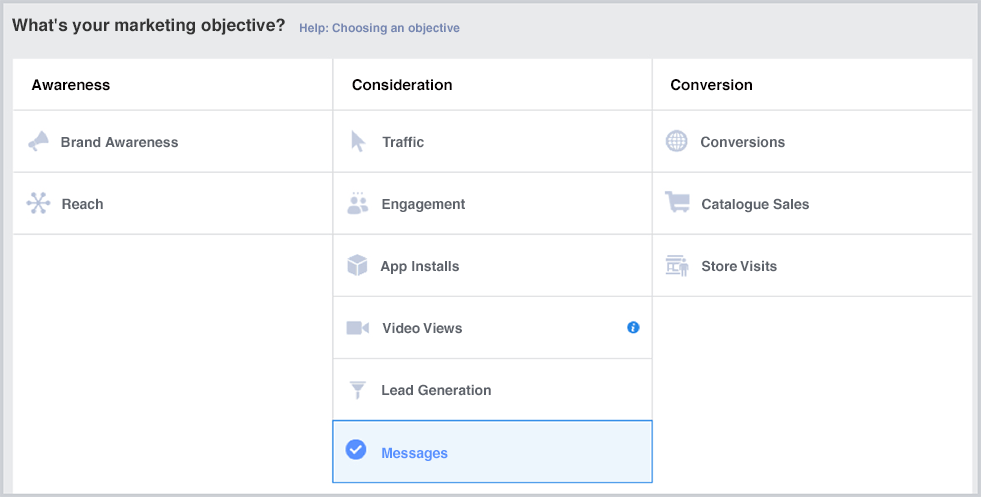
- Dynamic ads. Offering some automation, Facebook’s dynamic ads are designed to dynamically show the right products to potential shoppers who have expressed interest in your store, product, or niche.
- Collection ads. This Facebook ad format offers a more immersive way for shoppers to discover your products and includes four videos or optimized product images in a grid-like layout
- Video ads. Video ads are one of Facebook’s most powerful ad formats and are available on Facebook, Instagram, Facebook’s third-party Audience Network, and Messenger. (Upgrade your Facebook marketing by following these 6 Quick Tips for Creating Facebook Video Ads That Convert.)
- Domain ads. Facebook domain ads are simple page post ads that send Facebook users directly to your online store site or product pages.
- Messenger ads. Messenger ads appear in the Chats tab in their Messenger app.
- Instant Experience ads. Formerly known as Canvas Ads, Instant Experiences are full-screen ads that allow marketers to build a more immersive brand or product store. You can read more about these ads and see examples here.
- Carousel ads. These Facebook or Instagram ad types enable marketers to sell multiple related products in one ad.
- Lead ads. Lead ads enable Facebook marketers to collect information from prospects directly from their mobile ads, without the need to create a specific form landing page. They are great for email marketing list building.
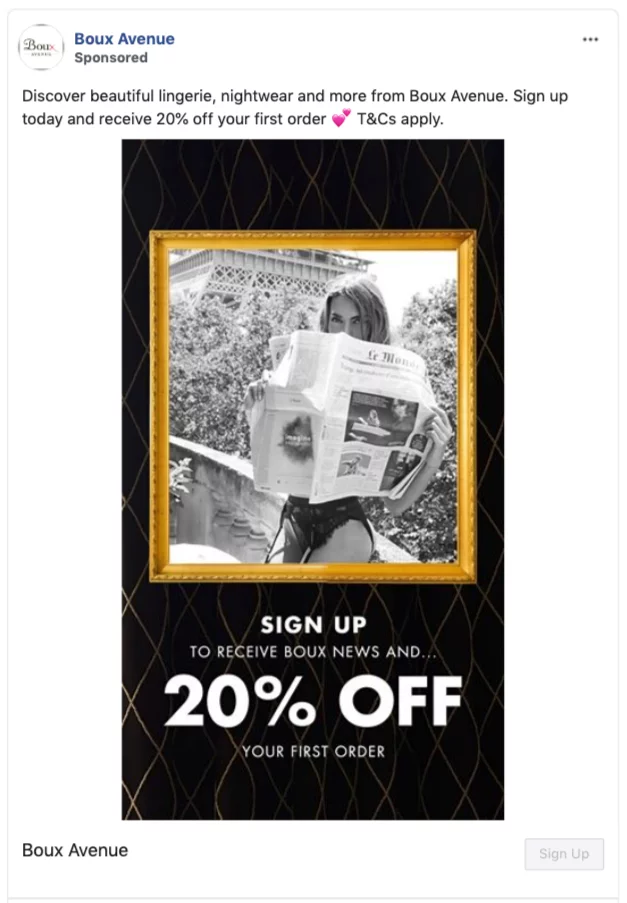
[Source: Drip]
Click here for a more detailed look at Facebook ads for eCommerce.
TikTok Campaign Types and Ad Formats for eCommerce
The newest channel on this digital ads comparison list, TikTok, offers a smaller but growing list of the campaign, ad format, and paid marketing feature options.
New Ad Type Alert: Similar to Meta’s collection ads, TikTok Collection Ads are currently being tested in selective marketing. These ads lead users to an Instant Gallery page showcasing a product collection.
Although marketers have fewer options, for now, they are quite cost-effective. And for the right market, they drive results in a BIG way.
Let’s take a look at the types of campaigns TikTok offers.
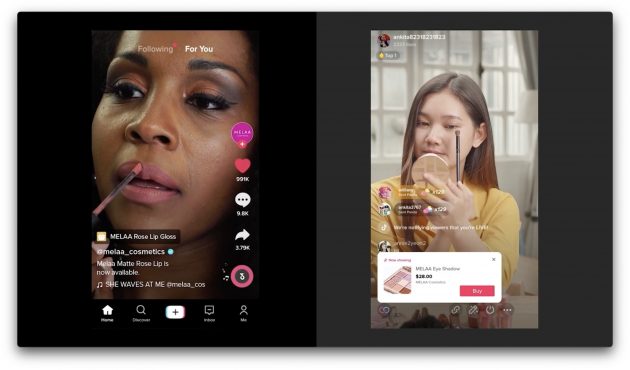
- TikTok Shopping features. As of September 2021, TikTok expanded its branding features to include Product Links and LIVE Shopping.
- TikTok Dynamic Showcase Ads (DSAs). DSAs enable marketers to present dynamic, more personalized, targeted ads to potential shoppers based on their interests.
- TikTok Creator Marketplace. This is TikTok’s influencer marketing platform that helps brands find perfectly matched influencers to promote their brand and/or products.
- TikTok Brand Takeover Ads. These are three to five seconds for video or three seconds for static graphic ads that appeal to users’ For You pages and include either a clickable link or a Branded Hashtag Challenge.
- Branded Effect TikTok Ads. Similar to Instagram AR filters with Branded Effects, brands can create shop brand filters, stickers, or lenses that can be used to promote brand engagement and drive UGC.
- TikTok In-Feed Ads. Placed in potential shoppers’ For You feeds, TikTok In-Feed ads are 60 seconds long and offer a similar experience to Instagram stories. Additionally, they can be liked, shared, and commented on and include options for multiple CTAs. (For ideas, visit our [Case Study] 9+ Winning TikTok Ad Examples and Why They Work post.)
- TopView TikTok Ads. These full-screen video ads are up to a minute, which play when users open the social platform app. After that, TopView Ads are placed in users’ newsfeeds.
- TikTok Branded Hashtag Challenges. With these campaigns, brands invite users to create content around a specific theme. As one of the most popular TikTok marketing options, Branded Hashtag Challenges tend to generate above-average engagement rates.
Click here for a more detailed look at TikTok Ads for eCommerce.
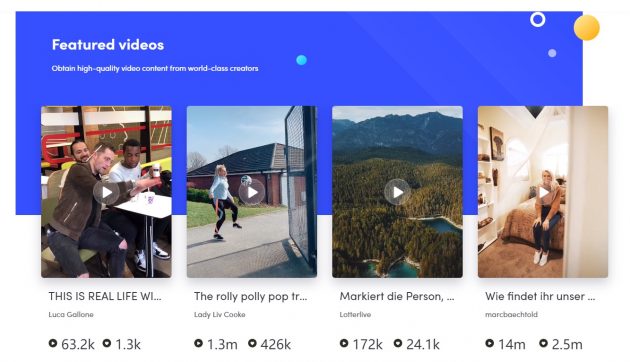
Google vs. Facebook vs. TikTok Campaign Types and Ad Formats
Here’s the thing, comparing Google, Facebook, and TikTok Ad formats is like comparing apples and oranges. Each platform’s campaign and ad format types serve different goals, budgets, and shopping engagement needs. And the chances are high that your audience is on all three and consuming different content on each.
Did you know that the average internet user is active on 7.5 social networks each month? For instance, 50.4% of IG users also use TikTok, and 83.9% of TikTok users also use Instagram.
50.4% of IG users also use TikTok
83.9% of TikTok users also use Instagram“Unique to platform” numbers are <1% for every network (save WhatsApp, where it’s 1.5%) pic.twitter.com/gUOutcOsDL
— Rand Fishkin (@randfish) August 8, 2022
This means your potential customers and shoppers aren’t just on Google, Facebook, or TikTok. They are probably on all of them. But to reach them at the perfect time for buying intent, you need a well-rounded eCommerce marketing strategy that includes a wide variety of channels and campaign types within those channels.
Therefore, online retail marketers should be testing all campaign types and ad formats to find the best combination for your brand. And regardless of which campaigns on which channel you opt for, the perfect eCommerce marketing strategy will ensure they all work together to improve overall ROAS.
Targeting Options
Another factor to consider when comparing Google Ads with Facebook or Tiktok is targeting options. Almost all digital marketing platforms have ways to target new and existing customers. However, when it comes to behavior, interest, and shopping intent, each offers a unique set of targeting options designed to help you improve CTRs and sales.
So how do Google, Facebook, and Tiktok Ad targeting differ? Let’s take a closer look.
Google Ads Targeting Options 2022
Google Ads has four main targeting options. Here is a breakdown:
- Content keywords. The most common and well-known targeting options for Google Ads are keywords. Here marketers use keywords to tap into topics potential shoppers are actually searching for. (Why Do I Need to Bid on Branded Keyword Terms?)
- Topics. Allowing marketers to tap into niche-related topics, this Google targeting option lets marketers reach a broad range of Display Network pages based on web content text, language, and page structure.
- Placement. Instead of targeting specific topics, this option enables marketers to manually drill down specific Google Display Network websites in which to advertise on. This type of Google targeting doesn’t require keywords and can be either the whole site itself or segmented even further to specific pages.
- Display expansion for search. Working with both Search and Display campaigns, this targeting option enables Google Ads to find users based on automated bidding and smart targeting.
You can read more about Google’s targeting options here.
Facebook Ads Targeting Options 2022
Facebook Ads, on the other hand, draws from users’ behavior and interests to help marketers get super segmented with ad audiences. Generally, Facebook Ads has three main targeting options where you can target new shoppers, previous store traffic, or create audiences that mimic existing customers.
Here is a breakdown of each:
- Core Audiences. With Core Audiences, eCommerce marketers define their ad targeting based on location, demographics, and interests.
- Custom Audiences. Custom Audiences enables store brands to reconnect with (retarget) potential shoppers who have already engaged with their store.
- Lookalike audiences. Facebook’s lookalike audience targets new potential shoppers with the same intent and behavior as current customers.
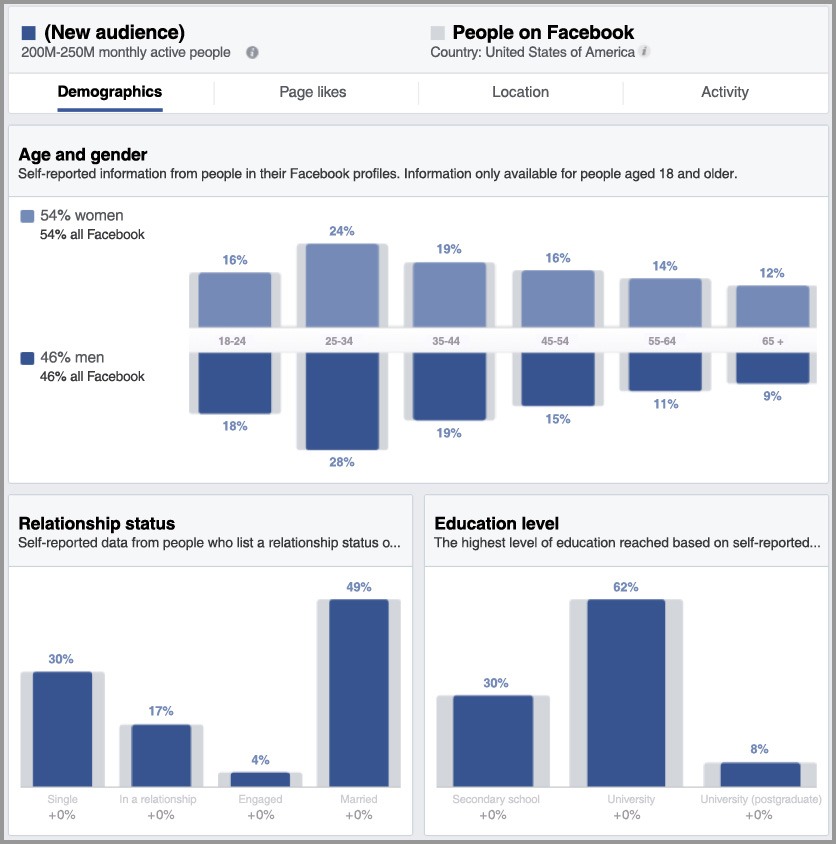
You can read more about Facebook’s targeting options here.
TikTok Ads Targeting Options 2022
TikTok Ads Manager supports the following targeting options:
- Audience targeting. This includes Lookalike or Custom Audience (similar to Facebook) targeting.
- Demographic targeting. TikTok ad demographics segmentation includes gender, age, location, and language.
- Interests and behavior targeting. With this targeting, marketers can deliver ads to segments based on interest, purchase intent, hashtag engagement history, and content behavior.
- Device. With TikTok marketing, eCommerce advertisers can define targeting by connection types (Wi-Fi/5G/etc.), operation type (iOS/Android), operation system version (Android 4.0 and higher), and mobile carrier.
- TikTok Smart Targeting. TikTok Smart Targeting ad feature enables eCommerce marketers to automatically define the best targeting option in terms of goals such as Traffic, App, Lead Gen, Community Interaction, or Conversion Web Objectives. Additionally, it automatically expands targeting settings to reach even larger audiences.
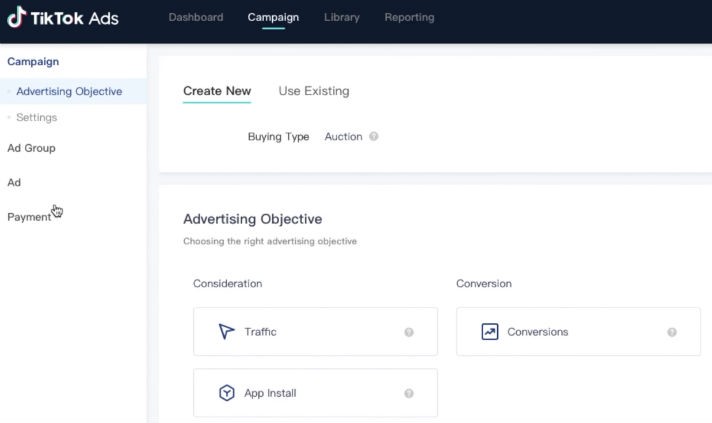
[Source: Influencer Marketing]
You can read more about TikTok’s targeting options here.
Google vs. Facebook vs. TikTok Targeting
Each platform offers a wide variety of targeting options, each unique to their platform, market, and ad types. For example, while Google Ads is primarily built around search intent and keywords, Facebook targets potential users based on behaviors and interests to push the most engagement.
Simply put: What works for one platform may not work for another.
The trick is using different channels and ad types with different target audiences to build a seamless shopping journey from awareness to checkout.

Advertising Costs
Google Ads, Facebook Ads, and TikTok are all PPC platforms where advertisers pay per click or engagement. Therefore costs will depend on several factors, such as targeting and the amount of competition. Additionally, advertisers factor in conversion rates, which differ per industry, to get actual costs: ROAS.
eCommerce Conversion Rates Benchmarks by Niche
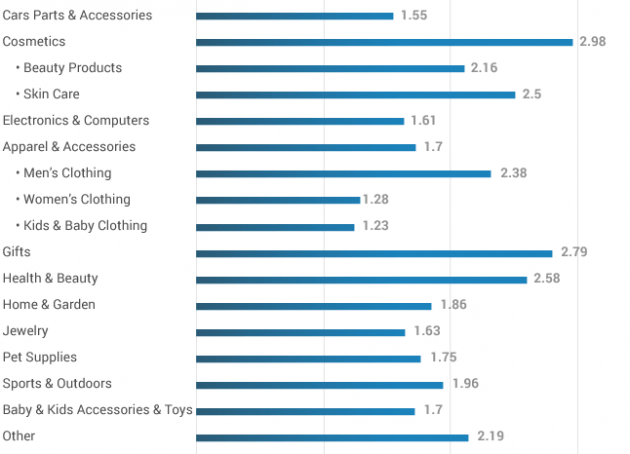
[Source: StoreYa]
Therefore, to assess the costs, marketers need to assess a host of things, including CTRs, conversion rates, and ROAS stats for each, as well as external market factors such as industry, buying stage, or demand.
Google Ads Costs 2022
Some factors that affect Google costs include:
- Your budget. The amount of daily and/or total budget you set for each campaign.
- Quality score and ad rank. These are ratings that Google uses to help determine a brand’s click rate.
- Niche. The more saturated the niche, the higher the competition, and the more it costs to compete.
- Touchpoints. Your average number of touchpoints it takes to convert a shopper.
- Poor campaign optimization. Marketers who don’t keep a close eye on campaigns and tweak them in real-time run the risk of paying too much for poor-performing ads.
- Account management. Incorrect Google account management and optimization can result in unnecessary ad spend.
However, what is more important here, is that you’re getting results for that spend. Beautiful Disaster, for instance, is seeing an average of 9.4 ROAS with their Google, YouTube, and Dynamic Product advertising, which they are running with Traffic Booster for a set budget. I.e., no hidden costs or costly mistakes!
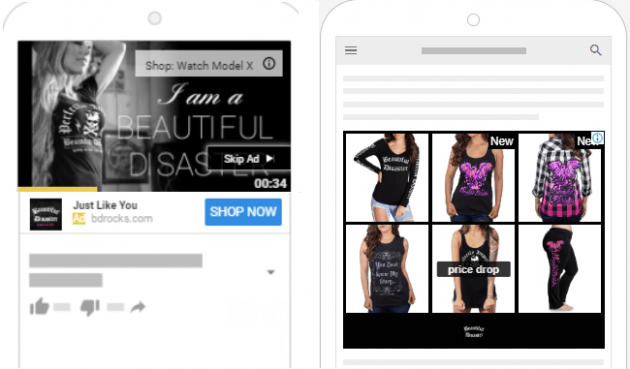
Facebook Ads Costs 2022
Some factors that affect Facebook costs include your:
- Niche. As with Google, the niche you’re selling in will affect the cost of your Facebook ads.
- Campaign objective. Campaigns with store visits (traffic) or product purchase goals can lead to higher ad costs. However, they also improve ROAS. It’s a balancing act.
- Budget. The maximum amount you’re willing to pay for campaign conversions. This can either be a dollar cap you set for your campaign in total or your daily spend setting.
- Audience segment. Who you choose to target with your campaign affects your Facebook CPCs. The broader the reach, the higher the budget you will need. Additionally, some segments have more competition than others, which drives up the cost of your ads.
- Bid strategy. Whether you choose manual or automated bidding can affect the cost of your ads.
- Ad placement. Each of Meta’s advertising channels has varied CPCs. For instance, one site reports that the average CPC for ads placed on Facebook can be around $0.30 less than those placed on Instagram.
Pro Tip: You can reduce your Facebook ad costs while improving ROIs by:
- Staying highly relevant
- Improving your ad frequency score
- Reviewing your campaign objectives to ensure they are suitable for your goals and needs
- Segmenting your Facebook audiences further to narrow your targeting
- Investing in more Facebook retargeting campaigns
- Using Growth Hero to identify those campaigns bringing down account ROAS (it’s free)
TikTok Ads Costs 2022
The TikTok advertising cost for 2022 has been a hot topic this year among eCommerce marketers.
Unlike Google or Facebook, TikTok charges for ads using a cost per mile (CPM) metric. Roughly speaking, this means as an advertiser, you are paying for impressions which would come out to around $10 for every 1,000 views. Additionally, TikTok has a minimum budget required of $500 per campaign.
The bottom line is that because TikTok ads are new and the app itself is growing quickly in user popularity, they can afford to charge premium rates. Here’s a breakdown from Influencer Marketing Hub of what some of the campaigns could cost you.
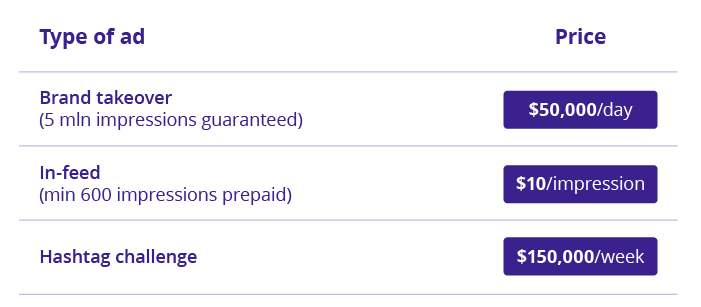
Google vs. Facebook vs. TikTok Ad Costs
Ultimately the cost of your ads on any platform comes down to campaign management. The better structured your accounts and the better optimized your campaigns are, the more cost-effective your ads will be.
However, you can have the cheapest ads in your niche, but if they are not driving traffic to your store, what is the point? The idea is to get the best results for the least amount of spend. Therefore, when comparing the costs of Google, Facebook, and TikTok Ads, you should be testing and tweaking to optimize ROAS.
To be able to get the best ROAS for your Facebook (and Google) campaign, consider investing in a PPC management system that handles your entire budget — and, of course, the management of your ads — across all your channels. Traffic Booster, for instance, allows you to choose your total advertising budget (starting from as little as $120 per month in total advertising spend) and runs your ads for you with no additional or surprise costs. Pick your budget here.
Alternatively, for those of you DIY-ing your advertising campaigns, you will want to review these comprehensive guides to ensure you can reduce spending while optimizing results:
Final Thoughts: Which Is Better? Google Ads, Facebook Ads, or TikTok Ads?
The bottom line is that each of these platforms offers benefits and drawbacks, and it’s more about using the right campaign type for the right digital marketing channel at the right time for the right shopper.
Each niche, brand, and audience will respond differently and should be tested and tweaked until you have a suite of ads, campaigns, and channels working across your entire shopping journey to drive sales.
In other words: It’s how you slot them into your overall eCommerce marketing strategy that is important. And, of course, you will want to test every ad format, campaign and/or channel before throwing huge budgets at it. While one platform may work for one store brand, it may not work for another.
Still have questions? Post them in the comments section below, and our PPC experts will get back to you!


Nicole Blanckenberg
Nicole is a content writer at StoreYa with over sixteen years experience and flair for storytelling. She runs on a healthy dose of caffeine and enthusiasm. When she’s not researching the next content trend or creating informative small business content, she’s an avid beachgoer, coffee shop junkie and hangs out on LinkedIn.
Comments
comments
Powered by Facebook Comments

